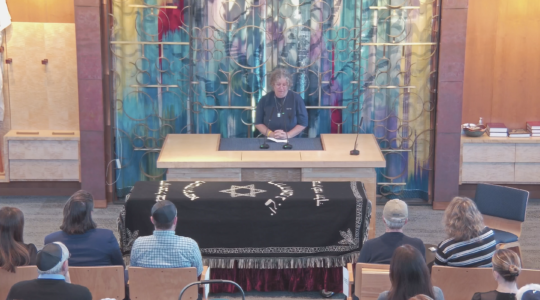JERUSALEM (JTA) — A public water reservoir dating to the First Temple period was unearthed next to the Western Wall.
The discovery unveiled late last week shows that “It is now absolutely clear that Jerusalem’s water consumption during the First Temple period was not solely based on the output of the Gihon Spring, but that it also relied on public reservoirs,” said Eli Shukron, excavation director on behalf of the Israel Antiquities Authority.
The reservoir was discovered in the archaeological excavations that are being conducted in the Jerusalem Archaeological Garden at the foot of Robinson’s Arch. The
excavations at the site are being carried out by the Israel Antiquities Authority, underwritten by the Ir David Foundation, and in cooperation with the Nature and Parks
Authority.
The reservoir was discovered during an archaeological project in which the drainage channel of Jerusalem dating to the Second Temple period is being exposed.
Some parts of the Second Temple drainage channel were discovered to have been built on top of structures from the First Temple period.
“While excavating beneath the floor of the drainage channel, a small breach in the bedrock was revealed that led us to the large water reservoir," Shukron said. "To the best of our knowledge, this is the first time that a water reservoir of this kind has been exposed in an archaeological excavation."
The reservoir has an approximate capacity of 250 cubic meters, making it one of the largest water reservoirs from the First Temple period to be discovered in Jerusalem. It is believed that the reservoir was used by the general public.

Help ensure Jewish news remains accessible to all. Your donation to the Jewish Telegraphic Agency powers the trusted journalism that has connected Jewish communities worldwide for more than 100 years. With your help, JTA can continue to deliver vital news and insights. Donate today.





